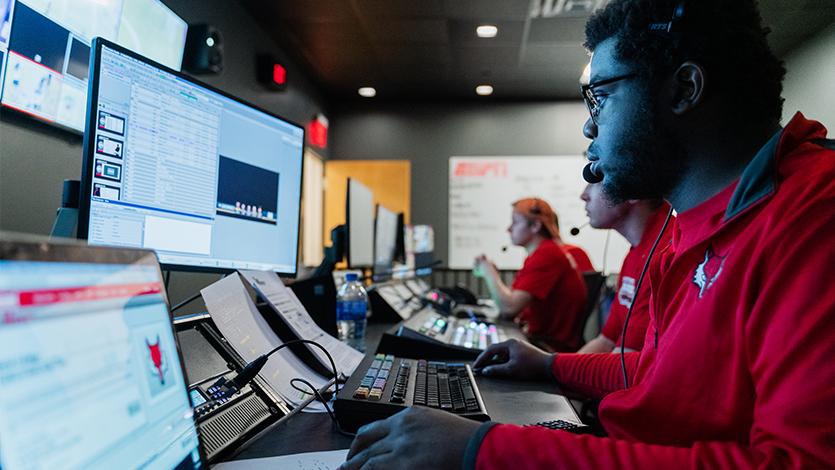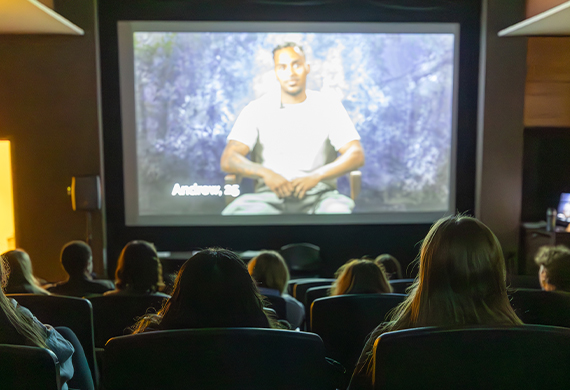Taking Control: The ESPN Teaching Control Room at Marist
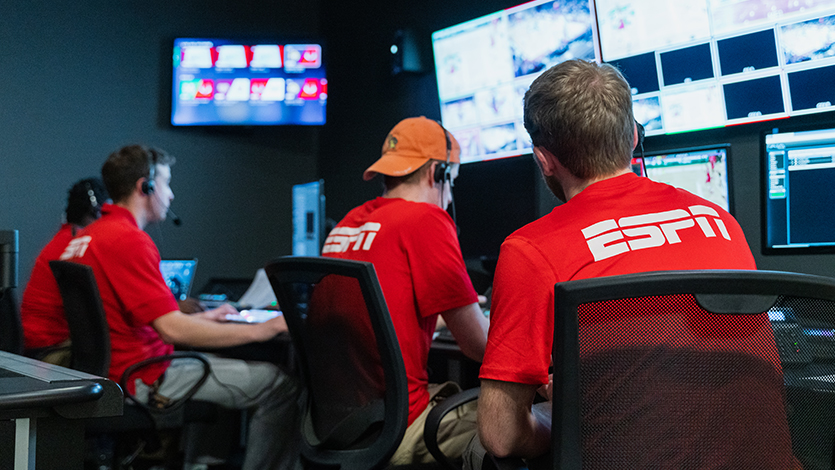
Athletics and academics come together in Marist’s new ESPN Teaching Control Room.
February 18, 2020—Imagine helping to produce an NCAA Division I basketball game for broadcast while still a college student. That’s exactly the opportunity Marist students have working with the College’s Athletics Department to produce games for ESPN3 and ESPN+. This year, that opportunity was kicked up a notch with the opening of the ESPN Teaching Control Room in the McCann Center.
The new teaching control room is significantly larger and features an audio board, replay station, graphics computer, and other industry standard equipment. Under the direction of Meghan Graham ‘18M, Director of Multimedia for Athletics, and engineer Mark Phillips, more than 50 Marist students have had a role in producing basketball, volleyball, softball, and water polo games. Unlike a mobile unit (which many colleges use), this room is large enough to have students working while others observe and get into the pipeline of working broadcasts themselves. The structure facilitates learning. It also affords Graham the opportunity to move around the space, working with her student producers throughout the broadcast.
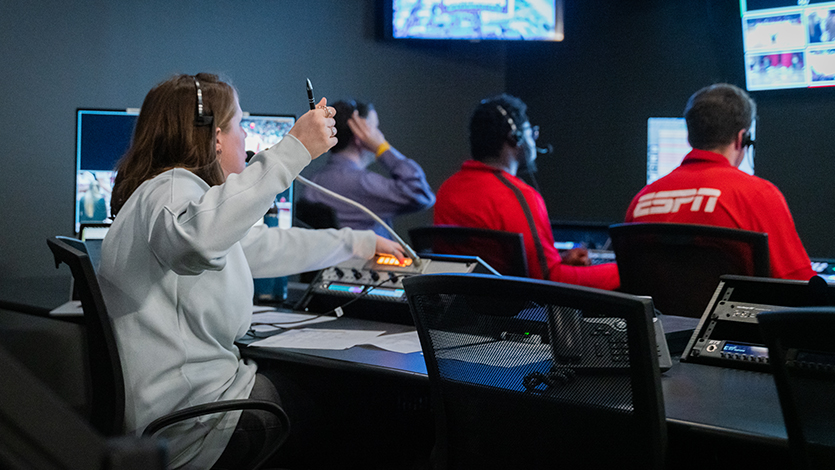
Meghan Graham directs a broadcast
High End Productions in an Active Learning Laboratory
“The ESPN Teaching Control Room is an active learning laboratory for Marist students to take the theory they learn in the classroom and apply it to practical experiences that will help prepare students for careers. This academic-athletic partnership has faculty and athletic staff engaged with a common goal of benefitting our students,” said Director of Athletics Tim Murray. “This is one of many reasons Marist is an attractive option for students who are interested in pursuing careers in sports communications.”
Steve Fenig, ESPN’s Campus Production Coordinator, gives the Marist team high marks. “Marist productions are among the higher end of college productions I’ve observed,” he said. Fenig noted that many schools utilize freelancers to handle the broadcast work. “But at Marist this is part of teaching and learning. Because students are involved, my role is more important. ESPN has certain standards; I provide feedback to schools on that. The Marist team always uses the feedback and keeps making improvements. It’s clear Meghan shares the critiques with students.”
Although she is directing the productions, Graham is definitely an educator in the control room, helping students to learn each job. “In this field, experience is everything and learning by doing is the only way to go,” said Graham, so she is grateful for Fenig’s feedback. “Steve is an expert in television production, so I listen to him intently,” she said. “There are always ways to improve whether that’s by adding graphics or trying different techniques. And the students are receptive to the comments I share; they want to learn.”
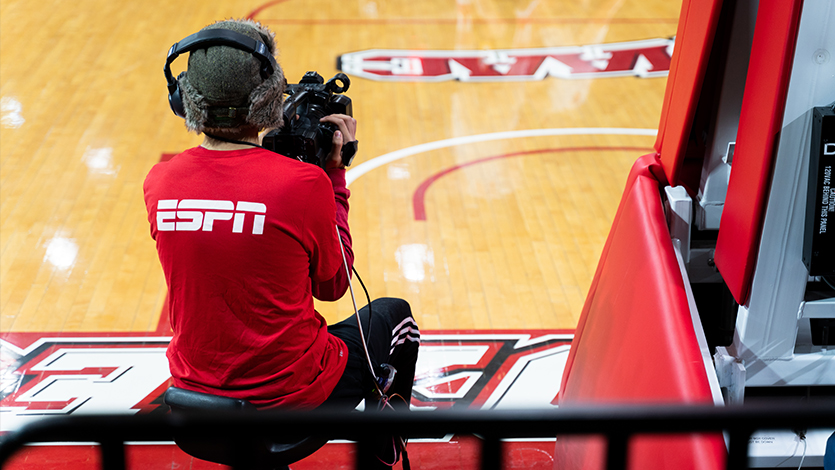
Fenig noted that Marist’s model—having a dedicated technical person and an overall director in Graham—is a strong one. “I’m very impressed with Mark and Meghan.”
Dan Oakes ‘21 has grown in his role as a student assistant in the control room. “When I first started I, like everyone else, began by working the main game camera for the productions because it is the simplest of the cameras. From there, I worked my way through the different camera positions and then into the control room.” For Oakes, the hands-on work has been a tremendous learning experience. “I have learned a lot about how an ESPN broadcast works and how most of the positions work from my experiences in the control room. That’s the main point: for the majority of the positions for a broadcast, the way you really learn is through experience and repetition.”
Strong Career Placement
Jane McManus, Director of the Center for Sports Communication, has worked to connect more students with this experiential learning opportunity on campus. “So many of our sports communications students can get real world production experience outside of the classroom through this collaboration,” said McManus. “It's been a terrific opportunity for them and gives them skills that future employers are looking for.”
That’s certainly been the case for Oakes. “Last semester I learned how to do replay in the control room which is very tough because it requires a lot of focus throughout the entire game and when I was first learning it and Meghan was explaining it to me I was lost but once I was ‘thrown into the deep end’ and was actually doing it during a live broadcast, I started putting the pieces together and it all started to click.”
Graham and the team in Athletics are proud of the array of students working and learning in the new facility. The opportunity is open to all but the work naturally attracts Communication and Sports Communication majors. “This work involves a real mix of the technical and the creative,” Graham noted. Students who have worked in Athletics production have gone on to rewarding careers with the MAAC, ESPN, MLB, Sports Illustrated, and Overtime.
